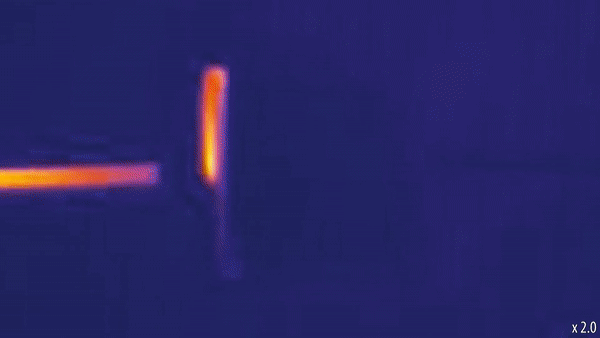2022-2023
Tianyu Yu, Weiye Xu, Haiqing Xu, Guanhong Liu, Chang Liu, Guanyun Wang, Haipeng Mi
We introduce Thermotion, a novel method using thermofluidic composites to design and display thermochromic animation effects on object surfaces. With fluidic channels embedded under the object surfaces, the composites utilize thermofluidic flows to dynamically control the surface temperature as an actuator for thermochromic paints, which enables researchers and designers for the first time to create animations not only on two and three-dimensional surfaces but also on the surface made of a few flexible everyday materials.
We report the design space with six animation primitives and two modification effects, and we demonstrate the design and fabrication workflow with a customized software platform for design and simulation. A range of applications is shown leveraging the objects’ dynamic displays both visually and thermally, including dynamic artifacts, teaching aids, and ambient displays. We envision an opportunity to extend thermofluidic composites to other heat-related practices for further dynamic and programmable interactions with temperature.
Publications:
Contributions:
- Leader of Thermotion. Conceptualization, design tool development, prototype, experiments, application demonstration, and paper writing.
- Developed algorithms to generate different fluidic channel patterns on curved surfaces, and then simulate the internal fluidic heat transfer with a finite volume program. Developed the design and simulation tool.
- Proposed the designed space for highly dynamic thermochromic effects actuated by the “flowing” temperature.
- Proposed and demonstrate the applications.
Thermotion
Thermotion composites and mechanism
The basic structure can be divided in four layers. When working, thermofluids of different temperatures in the fluid layer flow through the channel layer embedded under the object’s surface. As a result of heat conduction, the temperature of the object surface is dynamically changed and controlled. This activates the color-changing effects of the thermochromic paintings on the painting layer above the object’s surface, thereby creating animation effects.

The basic four-layered structure of Thermotion composites and the derived animation effect design space.
(Left) Back view, red-hot water, blue-cold water. (Middle) Front view in photography. (Right) Front view in thermography.
Animation effect design
We addressed the design space of the animation effects derived from the structure, including a series of animation effect primitives and two modification effects.
By varying the geometry pattern of the fluidic channels in the channel layer, Thermotion can create various animation effects of one activating area to change the color from one to another.

Based on different types of primitives, Thermotion can also create variations of the primitives on two properties, which are continuity and direction, by varying the temperature and direction of the thermofluidic flow.

Thermotion can also design the blur effect of the animation to expand the visual expressiveness. The blur effect can be realized by adding a highly thermally conductive material (e.g., copper tape in this work) as the heat diffusion layer to smooth the temperature distribution as well as the color distribution.

Thermotion can support multi-color effect based on multi-stage thermochromic paints and the controllability of the thermofluids temperature.

Design tool and fabrication pipeline
To help researchers and designers with the Thermotion animation effect design, we introduce a customized design tool to assist in the composites’ structure design and animation simulation. The tool is oriented to accomplish complex 3D fluidic structure design with only a few parameters. It is also implemented with a simulation function to provide a real-time simulation of the compiled effects of the composites with both photography and thermography views. We provided the release version and the open source codes for the design tool.

Design and simulation implementation
After the design procedure, the Thermotion composites can be fabricated with the following pipeline, including fabrication of fluid channel layer, heat diffusion layer, painting layer, and generation of fluid layer.

Fabrication pipeline
Application scenarios
Color-changing Artifacts
Various methods of dynamic artifacts have been explored to convey information or aesthetic expression through appearance-changing, which inspired us to use Thermotion as an alternative method to create color-changing effects on 2D and 3D objects with a high expressiveness. Below examples show a dynamic painting, a dynamic cup, and a group of dynamic sculptures.
Interactive Teaching Aids
The higher dynamic display allows Thermotion to transmit more complex information through the combination of these two feedback channels. This property inspired us to explore the applications of multi-modal interactive teaching aids.
Dynamic Skins for Ambient Display
Thermotion can provide non-intrusive visual and haptic feedback at the same time on object’s surfaces, compatible with everyday sheet-like materials. These features allow us to use Thermotion as dynamic skins for ambient display.
Further detials: Thermotion: Design and Fabrication of Thermofluidic Composites for Animation Effects on Object Surfaces (ACM CHI ’23)
